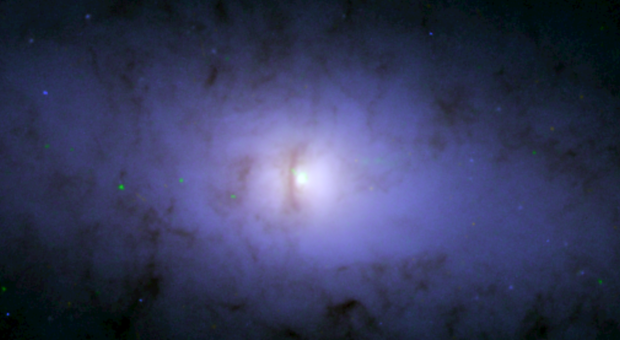
You can find trending topics by browsing social media platforms, industry websites, and forums like Reddit and Quora.
A majority of Americans say they have confidence in scientists to act in the public’s best interests. Confidence ratings have moved slightly higher in the last year, marking a shift away from the decline in trust seen during the COVID-19 pandemic.
A new Pew Research Center survey of 9,593 U.S. adults conducted Oct. 21-27, 2024, takes a close look at the public image of scientists, who serve as one potential source of information for Americans navigating complex policy debates and everyday decisions around things like their personal health and wellness.
Key findings
76% of Americans express a great deal or fair amount of confidence in scientists to act in the public’s best interests.
This is up slightly from 73% in October 2023 and represents a halt to the decline seen during the COVID-19 pandemic. Scientists continue to enjoy strong relative standing compared with the ratings Americans give to many other prominent groups, including elected officials, journalists and business leaders.
Majorities view research scientists as intelligent (89%) and focused on solving real-world problems (65%).
In addition, about two-thirds (65%) view research scientists as honest and 71% view them as skilled at working in teams.Communication is seen as an area of relative weakness for scientists.
Overall, 45% of U.S. adults describe research scientists as good communicators. A slightly larger share (52%) say this phrase does not describe research scientists well.
Another critique many Americans hold is the sense that research scientists feel superior to others; 47% say this phrase describes them well.
Americans are split over scientists’ role in policymaking.
Overall, 51% say scientists should take an active role in public policy debates about scientific issues. By contrast, nearly as many (48%) say they should focus on establishing sound scientific facts and stay out of public policy debates.
Americans also aren’t convinced scientists make better policy decisions on science issues than other people – just 43% think this is the case.
Website: International Research Scientist Awards
#researchscientist #Professor, #Lecturer, #Scientist, #Scholar, #Researcher, #Analyst, #Engineer, #Technician, #Coordinator, #Specialist, #Writer, #Assistant, #Associate, #Biologist, #Chemist, #Physicist, #Statistician, #DataScientist, #Consultant, #Coordinator, #ResearchScientist, #SeniorScientist, #JuniorScientist, #PostdoctoralResearcher, #LabTechnician, #ResearchCoordinator, #PrincipalInvestigator, #ClinicalResearchCoordinator, #GrantWriter, #PolicyAnalyst, #TechnicalWriter, #MarketResearchAnalyst, #EnvironmentalScientist, #SocialScientist, #EconomicResearcher, #PublicHealthResearcher, #Anthropologist, #Ecologist , #InternationalResearchAwards2024, #ResearchInnovation, #GlobalScienceAwards, #ScientistRecognition, #BreakthroughResearch, #ExcellenceInResearch, #ResearchLeadership, #InnovationInScience, #ResearchCollaboration, #GlobalScientificCommunity#ResearchScientists, #FutureScienceLeaders, #LeadingInResearch, #ScientificAchievements, #ResearchExcellence, #GlobalResearchImpact, #CuttingEdgeScience, #AwardWinningResearch, #InnovativeResearchSolutions, #TopResearchAwards, #ScienceAndInnovation, #InternationalResearchConference, #PrestigiousResearchAwards, #ScientificBreakthroughs, #InternationalAwards2024, #LeadingScientists, #ResearchPioneers, #GlobalResearchProgress, #TransformingScience, #ResearchAndInnovationLeadership
More Details:
Tilte: International Research Scientist Awards
website: researchscientist.net
Visit Our Award nomination: researchscientist.net/award-nomina...
For Enquires : research@researchscientist.net
Get Connected Here;
--------------------------
--------------------------
www.facebook.com/profile.php?id=61...
www.instagram.com/researchscientist8/?next=%2F
x.com/scientistaward
in.pinterest.com/ResearchScientist...
www.blogger.com/profile/0625116998...
www.tumblr.com/blog/researchscient...
Though the partisan gap in trust remains sizable, Republicans’ overall level of confidence in scientists is up 5 percentage points compared with a year ago – the first uptick in trust among Republicans since the start of the pandemic.
Partisans also differ over scientists’ role in policy debates, with Democrats far more supportive than Republicans of active engagement in making policy on scientific issues.
Trends in trust in scientists
In recent years, the scientific community has engaged with the public’s declining trust directly, and there are multiple organizations working on ways to support trust in science and improve communication with wider audiences.
About three-quarters of Americans say they have either a great deal (26%) or a fair amount (51%) of confidence in scientists to act in the best interests of the public. This share is up slightly since last year. Still, levels of confidence in scientists remain lower than in April 2020 – at the outset of the COVID-19 pandemic. At that time, 87% expressed at least a fair amount of confidence in scientists, including 39% who said they had a great deal of confidence.
Trust in scientists compared with trust in other groups
In an era of low public trust in institutions, scientists continue to be held in higher regard than several other prominent groups we’ve asked about, including journalists, elected officials, business leaders and religious leaders. Confidence ratings for scientists are even slightly higher than those for public school principals and police officers – two groups that receive positive overall ratings.
Go to the Appendix for more detailed views of these groups. The Appendix also includes views of medical scientists, whose ratings are very similar to those for scientists generally.













